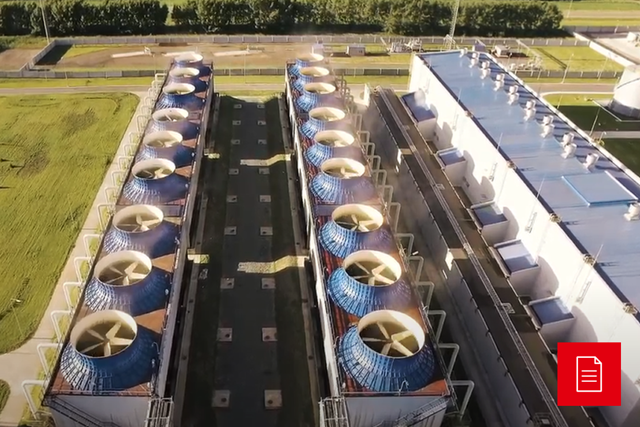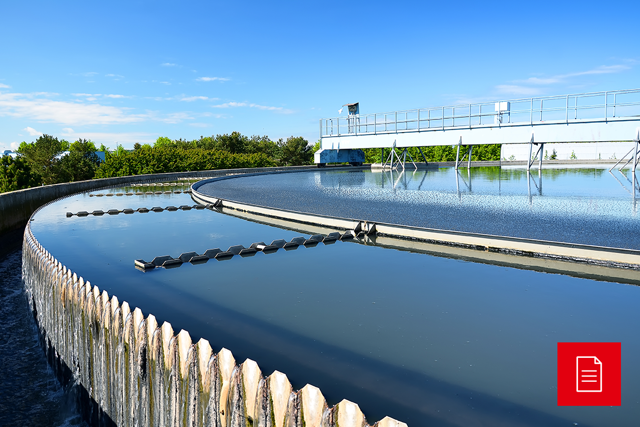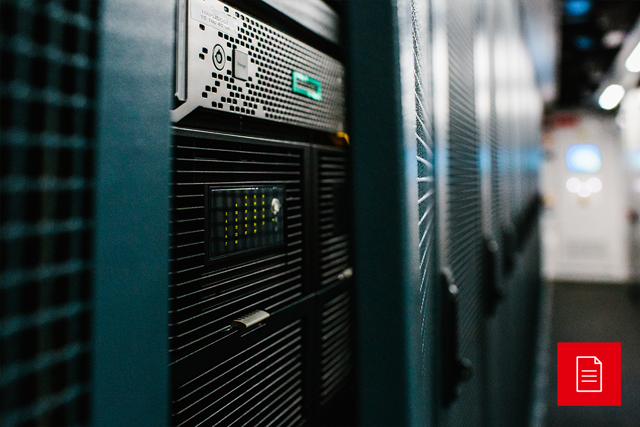
Energy efficiency – the trillion-dollar opportunity
Energy efficiency is the quickest and most affordable way to decarbonize our economy and ensure reliable and sustainable energy for everyone on the planet. The past 20 years, improvements in energy efficiency have kept a lid on emissions. But the potential of the full-scale effect of deploying energy efficiency in transport, industry and buildings have still not been tapped. According to the International Energy Agency (IEA), energy efficiency improvements can deliver a third of the energy-related emission reductions needed to reach the 2050 Net Zero Scenario [1]. Therefore, energy efficiency will be critical to succeeded with the green transition.
Most energy is used in our cities and buildings, in factories, and transportation. We use much more energy than we need, putting us off track to meet our global climate goals.
As our world is changing rapidly, recent challenges in energy security, energy prices and living cost have intersected with the climate crisis. This makes energy efficiency more indispensable than ever and without early action on efficiency, the energy transition to net zero emissions will be more expensive and much more difficult to achieve [2].
This article will take you through what energy efficiency is and highlight its benefits with concrete cases. You can also find inspiring videos and insights from the latest events and reports on energy efficiency.

Explore highlights from the 7th Annual Global Conference on Energy Efficiency
On 7-9th June 2022, the International Energy Agency’s 7th Annual Global Conference on Energy Efficiency brought together ministers, CEOs and decision-makers from government, industry, and civil society to explore how international ambition on energy efficiency can be translated into faster and stronger real-world progress.
The conference ended with the announcement of the “Sønderborg Action Plan”. The Action Plan sets out strategic principles on energy efficiency and political tools that can be used to increase energy efficiency efforts. Furthermore, during the conference Fatih Birol, Executive Director of the IEA, named the town “the energy efficiency capital” due to its remarkable carbon neutral commitment.
Energy efficiency solutions show the way to accelerate the green transition
Learn about eight tangible examples that demonstrate the value of early action on energy efficiency. These have been prepared on the occasion of the conference, all gathered in one booklet.
What is energy efficiency?
|
Energy efficiency aims at reducing the amount of energy required to provide products and services. It’s all about doing more with less. Energy efficiency is the one resource that every country possesses in abundance and therefore it is the quickest and cheapest way of addressing energy security, environmental and economic challenges, because the greenest energy is the energy we don’t use. Increasing, energy efficiency is often about small improvements like installing energy saving components such as valves or thermostats. However, energy efficiency is integral to all aspects of sustainable growth and innovation. To use less energy and unlock the full potential of renewable energy sources and extend their benefits, efficient technology and innovative storage solutions are key. This is because we reduce the need to expand the grid, when we reduce energy demand and therefore accelerate the switch to renewable sources. Additionally, changes are also required in enhancing electrification, behavior changes, digitalization, and material efficiency in industry [3]. |

Why is energy efficiency important?
The fight against climate change and the subject of energy efficiency are interlinked. In 2015, the Paris Agreement set a binding target of keeping the global average temperature rise in this century as close as possible to 1.5 degrees Celsius. To address this climate emergency and reduce our carbon footprint, we need to significantly reduce greenhouse gas emissions.
Investments in energy efficiency have already made a significant impact on constraining the growth in greenhouse gas emissions. IEA highlights that doubling the rate of energy efficiency improvements seen in the last decade would, by 2030, slash global energy use by the same amount used in China every year, saving households $650bn [4].
The analysis published by IEA highlights the significant opportunities for fast energy efficiency gains in all sectors of the global economy. Many of these opportunities include technologies which are readily available. According to the IEA, around a third of the avoided energy demand by 2030 needs to come from the deployment of more technically efficient equipment, ranging from air conditioners to cars and trucks. Electrification also plays a significant role, providing 20% in energy savings, for example through replacing fossil fuel boilers with more efficient heat pumps, switching to electricity for low temperature heat in industry, and faster adoption of electric vehicles.
The United Nations Sustainable Development Goal 7 focuses on ensuring access to affordable, reliable, and modern energy. Today, 840 million people do not yet have access to electricity [5]. It is key that these ‘new’ energy consumers use it as efficiently as possible to prevent an increase in carbon emissions and ensure a transition to a climate neutral society that is just and socially balanced for all.
“If the world is to meet climate goals to limit global warming, energy efficiency measures must be prioritized. A third of the reduction needed in energy-related CO2 emissions this decade according to the IEA net zero scenario must come from improvements in energy efficiency. The good news is that the solutions are there to improve energy efficiency in all sectors. We don’t need to wait. We need action because the greenest energy is the energy we don’t use.” - Kim Fausing, Danfoss President and CEO

What are the benefits of energy efficiency?
Efficient energy use saves money and has low policy and technology risk.
Solutions are already there, and they can be implemented right away. And most have short payback time. Faster action on energy efficiency will reduce energy costs up to USD 2 trillion with the current prices. And by 2030 create 10 million jobs in areas such as new construction and building retrofits, manufacturing, and transport infrastructure [6].
Improving energy efficiency reduces our carbon footprint and is a major opportunity for driving the world towards an ambitious, cost-effective, and socially fair transition and to deliver a climate neutral economy that can bring benefits for economic growth, employment, quality of life, public health, improved air quality, industrial productivity, energy security etc.
Sustainable Cities – energy efficiency in the urban context
According to IEA, more than 50% of the world’s population currently lives in cities, and this number is expected to grow to more than 70% by 2050. At the same time cities are responsible for 80% of global GDP for (Gross Domestic Product) and generate around 70% of global CO2 emissions [7]. This massive growth in demand for urban energy infrastructure indicates a great opportunity to accelerate progress towards ambitious climate goals. Therefore, to meet this demand for infrastructure and construction while delivering on the Paris Agreement and the SDGs (Sustainable Development Goals), we must work on our cities.

Cities offer unique opportunities to create efficient energy systems and use synergies between sectors. That is why, to meet their ambitious climate targets, cities need to transform their energy systems. And at the core of this transformation is the integration of different sectors into one smart and efficient energy system. This accelerates the need for innovation in urban efficiency and for developing sustainable low carbon and carbon neutral buildings.
Solutions are already available
The good news is that the technologies required to accelerate the decarbonization and develop low carbon cities already exist. And by fast-tracking the adoption of these innovative and proven solutions in cities, we can accelerate the low-carbon development and stay on course for net-zero in 2050.
So far, cities around the world have shown they are leading the way towards a more sustainable future by making ambitious commitments in line with Paris Agreement targets. City networks such as C40 Cities are doing a great job in sharing best practices amongst the most sustainable cities and taking the lead in ambitious climate action.

Sustainable, green, smart – energy efficiency in buildings
Buildings account for 28% of all global energy-related CO2 emissions [8]. Therefore, we need to ramp up improvements in the energy efficiency of buildings. Smart buildings can play a significant role in smart and integrated energy systems.
In 2018, heat accounted for 50% of global final energy consumption [9]. In the US, 65% of all the energy produced is squandered in the form of waste heat [10]. There is a tremendous potential in reusing heat that would otherwise be wasted, also known as excess heat.
Supermarkets are big energy consumers due to the large cooling devices running 24/7. But supermarkets can also generate heat and power as a biproduct of the intensive cooling processes. Supermarkets can harvest the excess heat from the cooling devices that is disappearing into the air today and use it to heat their own store or to provide hot tap water for free to the surrounding areas.
Additionally, connected buildings, such as supermarkets, can offer excess capacity in an increasingly renewable-energy-based system, providing flexibility when the sun is not shining, or the wind is not blowing. Smart energy solutions – district energy and thermal energy storage – that combine cooling and heating are highly energy and resource efficient and an affordable solution.
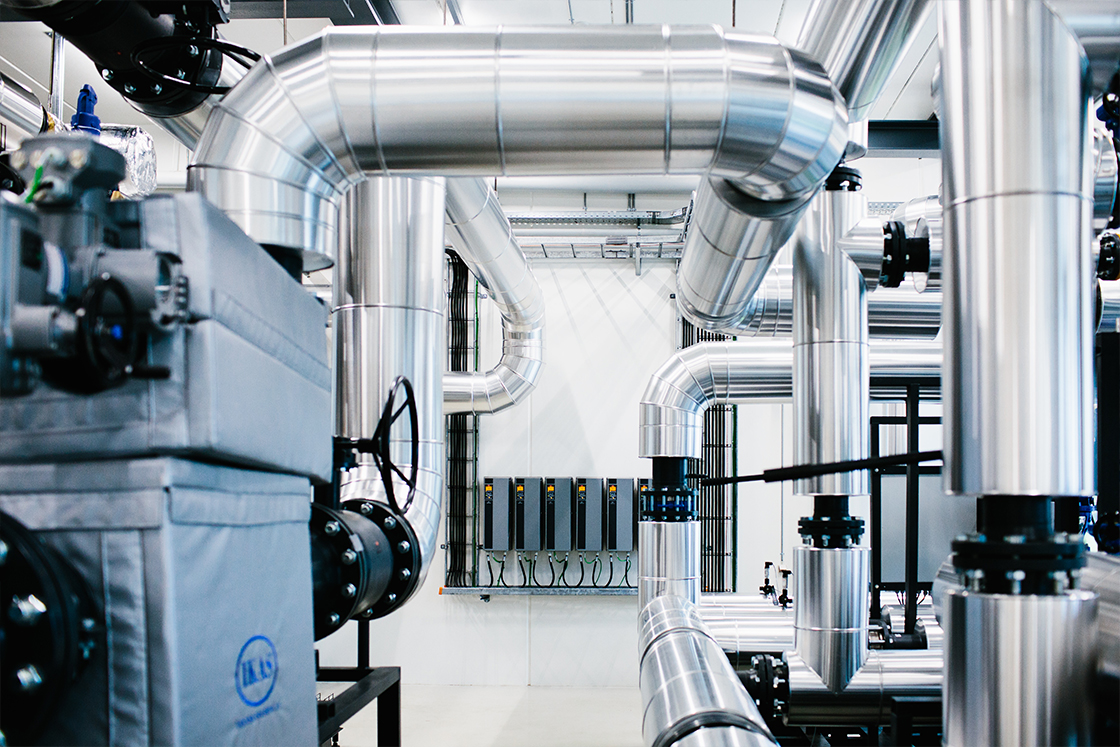
District Energy – energy efficiency in district energy systems
District heating and district cooling improves energy efficiency and lowers costs and carbon emissions. According to the Heat Roadmap Europe, Heating and Cooling 2017 report, 12% of Europe’s heat demand is currently met by district heating [11]. If appropriate investments were incentivized by the EU, this number could reach 50% by 2050, which would prove the advantages of district heating both economically and environmentally. 12% of the EU 2030 energy efficiency target could be met by increasing the district heating share from 12% to 30%.


Cities will lead the transport electrification revolution
Transport accounts for 27% of all global energy-related CO2 emissions [12]. But transport also emits dangerous particles that impacts air quality in cities and harbors. With electrification of engines and more efficient use of their energy, we can make battery power stretch further in hybrid and electrified vehicles and double down on both emissions and air pollution.
According to the World Health Organization, 99% of the world’s population live in places where air pollution levels exceed WHO guideline limits [13].
The Intergovernmental Panel on Climate Change IPCC Special Report on Global Warming of 1.5ºC finds transitions in energy for transport and cities to be important pathways to limiting global warming [14]. So, to limit the temperature increase to 1.5 degrees Celsius and reduce health impacts of air pollution we must focus on transport electrification.
More energy efficient vehicles are important steps, as are electric mobility and vehicle electrification. With electrification comes great opportunities to enhance the flexibility, efficiency, and environmental performance of almost any application or system, at sea or on land, opening for a comprehensive vision for low carbon cities.

Energy for water – energy efficiency in water systems
Water is essential. Most importantly as a precondition to life, but also as a key to combatting climate change. Word Economic Forums estimates that by 2040, there will be a 40% deficit in the supply of water available compared with global demand [15]. Currently, over 2 billion people live in water-stressed countries. This number is expected to be increased in some regions because of climate change and population growth [16]. Currently, the water sector is responsible for around 4% of global electricity consumption [17]. It takes tremendous amounts of energy to provide people with clean drinking water and sanitation – a declared human right. Today, cost-effective and energy efficient solutions can reduce energy consumption in the water sector massively, not least at wastewater treatments plants. Without action, global water-related energy consumption will increase by 50% by 2030 [18]. The world needs more water and fewer carbon emissions. Energy efficiency provides a path to break the curve.
There is a significant potential for energy savings in the water sector is all the economically available energy efficiency and energy recovery potentials are exploited – not least within the water supply and water treatment sector [19].
An obvious place to start is wastewater treatment plants that are present in most cities around the world. Water treatment plants are often operated by municipalities and eat up between 30-40% of municipal electricity bills [19]. For wastewater companies, the electricity bill constitutes the second largest operational cost behind labor [20].
Wastewater contains significant amounts embedded energy that can be harnessed to turn wastewater management energy neutral, thus producing the same amount of energy that it consumes – and with the right approach, even more. Consequently, wastewater treatment plants have the potential to be turned from energy consumers to energy producers.
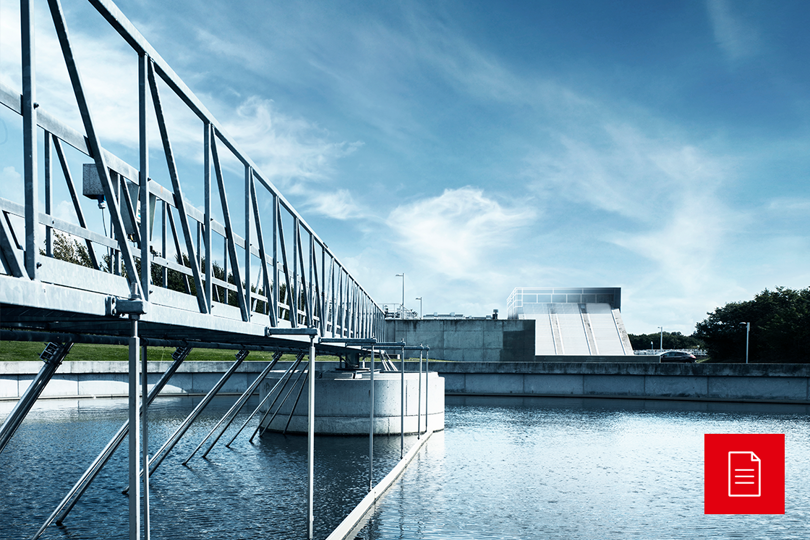
Rethinking the water sector | Article
The mutual dependence of energy and water and increasing global demand for each has an enormous impact on economic growth, environmental sustainability and our future in general.

Reducing food loss through sustainable food cold chains
By 2050, the world will need 60% more food to feed the global population [21]. Today, greenhouse gas emissions from food loss and food waste contribute to 8 % of global warming [22]. If food wastage were a country, it would be the third largest emitting country in the world. Bringing more food to the table through efficient food cold chains infrastructures allows us to contribute to limiting the temperature increase to 1.5 degrees Celsius. Improving food transport by establishing cold chains would also help the response to food loss at farms and pack houses and increase farmers´ incomes and food safety.

Energy efficiency in homes
There are a lot of ways to save energy in our homes. In fact, simple improvements can help reduce energy wastage, cut costs, and make our homes healthier, more comfortable, and more productive places to be in. Just by fixing the basics, we can on average achieve great energy savings in our buildings – and on our bill – with short payback time.
Today, there are still over 500 million manual, uncontrolled valves installed in European buildings. By replacing these manual valves with thermostats radiator valves, households could on average save up to 18% on their energy bills and have an energy efficient home. For European citizens this represents savings of €12 billion annually and a CO2 emissions reduction of about 24 million tons.
In addition, there are nearly 250 million radiators with thermostatic radiator valves older than 20 years that could be upgraded to digital valves which would lead to even higher energy and cost savings. Smart home technology that uses artificial intelligence and sensors, can help us predict our energy consumption – and lower the needed supply to meet the demand [23].

Towards zero-carbon-ready buildings
Most of the world’s building stock must be zero-carbon ready by 2050. Zero-carbon-ready buildings are highly energy efficient and supplied with energy directly from renewable sources or from energy sources with the potential to be fully decarbonized, such as district heating [24].
According to IEA’s Net Zero Emissions by 2050 Scenario, all new buildings must be zero-carbon ready by 2030. And 20% of all existing buildings must be retrofitted to be zero-carbon ready by 2030 [25].
The smart homes of the future are already here. The Leanheat software solution, for instance, uses artificial intelligence to control and monitor the temperature and humidity of every individual apartment in a residential building, saving time and money.

Reducing emissions from construction machinery
Over the next years, the world is expected to build 230 billion square meters in new construction – adding the equivalent of Paris to the planet every single week [26]. Construction machinery, such as excavators, is notorious for being inefficient, swallowing vast amounts of diesel, very little of which is converted to productive work. The construction industry accounted for a total of 20% of global-related carbon emissions in 2020 [27].
Today, the solutions are already there to drastically improve fuel efficiency in heavy construction machines, while more compact machines can be fully electrified. By combining electrification and energy efficient solutions in an excavator, just a quarter of the energy input is needed to shift the same amount of earth. Continued improvements in energy efficiency will pave the way for full electrification of the construction machinery.
Danfoss takes climate action
The world´s climate targets fit right into Danfoss’ business context and give us the platform to develop our work and engage in projects with our partners. We take pride in a high sustainability ambition, and that is reflected in our latest Sustainability Strategy. We continuously aim to further strengthen and develop our sustainability work in line with the requirements of the Paris Agreement and other science-based targets. We are targeting CO2 neutrality of all global operations latest by 2030 and have joined the ‘Business Ambition for 1.50C – Our Only Future’ initiative. We also work to play our part in realizing the SDGs by integrating them directly into our business model.

A climate strategy that is good for the planet.. and the pocket
Energy productivity is the key to decarbonizing our economy, and at Danfoss, we take the lead when it comes to engineering talk into action. Through joining the Climate Group´s EP100, Danfoss is committed to doubling its energy productivity before 2030. To achieve this target, measures have until now been implemented in our 27 largest sites – accounting for 85% of Danfoss’ total energy consumption.
By 2019, an energy productivity improvement of 80% since 2007 has been achieved. Within few years, it is expected to reach 100%, which means that half the energy will generate the same output. This not only saves energy, it also saves costs that stem from energy savings in heating, cooling, ventilation and lightning and investments in a global energy savings project.
We are not only taking action within our production sites, but also by electrifying our company car fleet by latest 2030. It is essential to invest heavily in electrification that is then of course powered by renewable energy to achieve a world of no more than 1.50 global warming. Therefore, we also joined the Climate Group’s EV100 and RE100 initiative and have become the first global technology company to join all three initiatives and thereby taking the lead among businesses towards a sustainable future.

Giving partnerships the speed and scale they need
We strongly believe that the private sector becomes stronger when we join forces with each other and with other actors such as governments and international organizations to deliver ambitious solutions based on technical know-how which not only solves one challenge, but creates value at a local, regional and global scale. So, the more widely available energy efficient, state-of-the-art equipment becomes in the markets we operate in, the better we serve the climate. In other words, delivering solutions to the world's challenges is also good business.
Two such partnerships are our work with Sustainable Energy for All and the UN Environment District Energy in Cities Initiative.The key focus is to meet SDG7´s call for doubling the global energy efficiency improvement rate by enhancing the global adoption of efficient district heating and cooling services and scale-up energy efficiency policy, action, and investment. Of course, we also closely follow, engage on and endorse regulatory developments such as the European Commission EU Green Deal, which will set Europe on course to be the first climate-neutral continent. We know that regulatory action at all level is a keydriver of ambition and are committed to playing our role in ensuring this happens. Today, we have the innovation and technologies required to help meet our climate targets and future-proof our planet. But with strong, proactive partnerships like these across business, government and civil society we can add – much-needed - speed and scale.








